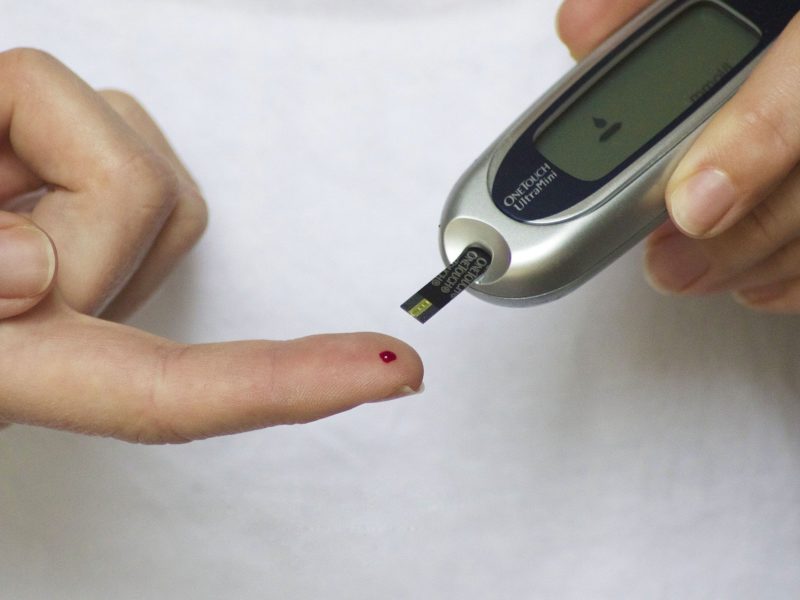Excerpted from Wikipedia
Diabetes mellitus (DM), commonly known as diabetes, is a group of metabolic disorders characterized by a high blood sugar level over a prolonged period of time.[11] Symptoms often include frequent urination, increased thirst, and increased appetite.[2] If left untreated, diabetes can cause many complications.[2] Acute complications can include diabetic ketoacidosis, hyperosmolar hyperglycemic state, or death.[3] Serious long-term complications include cardiovascular disease, stroke, chronic kidney disease, foot ulcers, damage to the nerves, damage to the eyes and cognitive impairment.[2][5]
Diabetes is due to either the pancreas not producing enough insulin, or the cells of the body not responding properly to the insulin produced.[12] There are three main types of diabetes mellitus:[2]
- Type 1 diabetes results from the pancreas’s failure to produce enough insulin due to loss of beta cells.[2] This form was previously referred to as “insulin-dependent diabetes mellitus” (IDDM) or “juvenile diabetes”.[2] The loss of beta cells is caused by an autoimmune response.[13] The cause of this autoimmune response is unknown.[2]
- Type 2 diabetes begins with insulin resistance, a condition in which cells fail to respond to insulin properly.[2] As the disease progresses, a lack of insulin may also develop.[14] This form was previously referred to as “non insulin-dependent diabetes mellitus” (NIDDM) or “adult-onset diabetes”.[2] The most common cause is a combination of excessive body weight and insufficient exercise.[2]
- Gestational diabetes is the third main form, and occurs when pregnant women without a previous history of diabetes develop high blood sugar levels.[2]
Type 1 diabetes must be managed with insulin injections.[2] Prevention and treatment of type 2 diabetes involves maintaining a healthy diet, regular physical exercise, a normal body weight, and avoiding use of tobacco.[2] Type 2 diabetes may be treated with medications such as insulin sensitizers with or without insulin.[15] Control of blood pressure and maintaining proper foot and eye care are important for people with the disease.[2] Insulin and some oral medications can cause low blood sugar.[16] Weight loss surgery in those with obesity is sometimes an effective measure in those with type 2 diabetes.[17] Gestational diabetes usually resolves after the birth of the baby.[18]
As of 2019, an estimated 463 million people had diabetes worldwide (8.8% of the adult population), with type 2 diabetes making up about 90% of the cases.[10] Rates are similar in women and men.[19] Trends suggest that rates will continue to rise.[10] Diabetes at least doubles a person’s risk of early death.[2] In 2019, diabetes resulted in approximately 4.2 million deaths.[10] It is the 7th leading cause of death both globally and in the US.[20][21] The global economic cost of diabetes related health expenditure in 2017 was estimated at US$727 billion.[10] In the United States, diabetes cost nearly US$327 billion in 2017.[22] Average medical expenditures among people with diabetes are about 2.3 times higher.[23]
